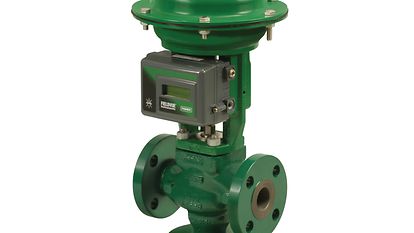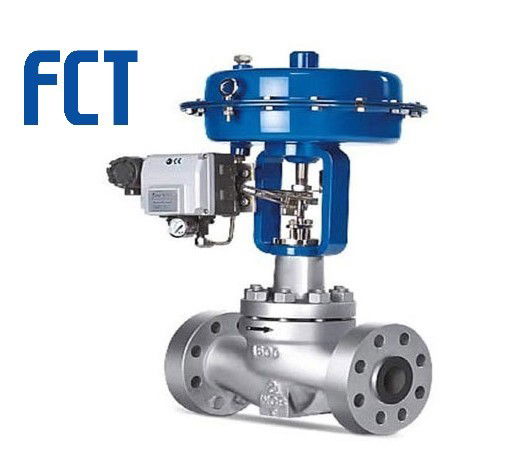
Maximize Power Savings and Comfort With Advanced Structure Automation Controls
In the realm of contemporary design and facility monitoring, the assimilation of innovative building automation manages stands as a critical development. The convergence of modern technology and sustainability has actually birthed a brand-new era where power performance, convenience optimization, and functional streamlining are no longer achievable truths however distant desires. By taking advantage of the power of automation, buildings can adapt, react, and progress in manner ins which were as soon as inconceivable. The capacity for substantial power savings and enhanced comfort is not just a pledge however a possibility waiting to be met. This paradigm shift in building management holds the crucial to unlocking a globe where ecological conscientiousness and occupant wellness harmoniously exist together within the wall surfaces of our structures.
Energy Performance Conveniences
Energy effectiveness benefits can substantially decrease energy consumption and functional costs in buildings. Energy-efficient systems, such as advanced building automation controls, can optimize the usage of sources like air conditioning, home heating, and lights, leading to lower power costs over time.
In addition, improved energy effectiveness can extend the life-span of building devices and systems. By operating extra effectively, heating and cooling systems, light, and various other structure components experience less deterioration, causing minimized upkeep and substitute costs. In addition, energy-efficient structures frequently regulate greater property values and rental prices, providing lasting financial benefits to owners.
Moreover, energy performance can boost resident comfort and efficiency. Appropriately controlled indoor settings with optimal illumination and thermal problems create an even more pleasurable and favorable work space, causing improved employee complete satisfaction and efficiency. Overall, the energy efficiency benefits connected with innovative building automation controls are diverse, including expense financial savings, ecological stewardship, and owner wellness.
Improved Convenience Control
Enhancing convenience control in structure environments calls for a sophisticated combination of advanced automation systems for ideal owner health. By making use of innovative structure automation controls, facilities can customize the indoor atmosphere to fulfill the specific requirements and choices of passengers. These systems allow accurate regulation of ventilation, temperature, and lighting, developing a comfy and productive environment. Passenger complete satisfaction and efficiency are carefully linked to thermal convenience, making it necessary to have systems in area that can adjust to changing problems in real-time.
Boosted convenience control surpasses standard temperature adjustments. It includes functions such as personalized settings, tenancy sensing units, and all-natural light application to create a responsive and dynamic environment. By integrating these sophisticated controls, structures can not only enhance comfort but additionally improve energy performance by optimizing system procedures based on actual tenancy and use patterns. Inevitably, prioritizing resident convenience through sophisticated automation systems results in a more delightful and much healthier interior atmosphere.
Functional Efficiency Improvements

Additionally, the application of real-time surveillance and analytics devices allows building drivers to recognize energy inadequacies and functional abnormalities quickly. By continuously keeping track of energy use patterns and system efficiency metrics, modifications can be made in real-time to optimize energy usage and make sure peak functional performance. control valves. Furthermore, incorporating need feedback techniques into building automation controls can additionally enhance operational performance by dynamically adjusting energy usage based upon grid conditions and prices signals
Indoor Environment Optimization
Reliable interior why not check here environment optimization is an essential helpful site element of structure automation controls, making sure passengers' convenience and well-being while making best use of energy savings. By utilizing advanced sensing units and controls, building automation systems can constantly adjust and keep track of temperature level, humidity degrees, air high quality, and air flow to produce an optimal interior setting. Preserving consistent and comfortable problems not only enhances occupant satisfaction yet likewise increases performance and total well-being.
Interior environment optimization likewise plays an important duty in power efficiency. By fine-tuning home heating, air conditioning, and air flow systems based upon real-time data and tenancy patterns, building automation controls can considerably reduce power intake - control valves. For circumstances, carrying out techniques such as demand-controlled air flow and thermal zoning can aid decrease power waste while making sure that each area of the building obtains the needed conditioning.

Sustainable Environment Development
Structure automation regulates not only optimize interior environment problems for power efficiency and passenger comfort yet additionally lay the structure for developing a sustainable setting via strategic monitoring of sources and systems. By incorporating innovative structure automation technologies, such as sensors, actuators, and smart software, centers can change and monitor power usage in real-time to lessen waste and reduce their carbon impact. These systems enable anticipating upkeep, recognizing potential issues before they escalate and maximizing tools performance to boost durability and efficiency.
Furthermore, sustainable environment development extends past power management to include water conservation, waste decrease, and interior air top quality renovation. Building automation controls can regulate water use, find leakages, and make certain proper garbage disposal practices, adding to total sustainability initiatives. Additionally, by monitoring and managing air flow and filtration systems, these innovations boost occupant wellness and efficiency while decreasing energy usage related to heating and cooling procedures.
Verdict
In verdict, advanced structure automation regulates deal significant advantages in terms of power financial savings, comfort control, operational performance, indoor Clicking Here environment optimization, and creating a sustainable setting. By executing these controls, structures can attain optimum performance while reducing power intake and improving occupant comfort. It appears that the usage of advanced automation modern technology is essential in boosting building performance and creating a much more lasting future.
Power effectiveness benefits can substantially minimize energy usage and functional costs in structures. In general, the power efficiency benefits associated with innovative building automation controls are complex, encompassing price savings, ecological stewardship, and passenger wellness.
Additionally, incorporating need action methods into building automation controls can better enhance operational efficiency by dynamically changing energy usage based on grid conditions and rates signals.
Building automation manages not only maximize indoor climate problems for energy effectiveness and occupant convenience but likewise lay the structure for developing a sustainable setting through tactical monitoring of systems and sources.In verdict, advanced structure automation controls deal significant advantages in terms of energy savings, comfort control, operational efficiency, interior climate optimization, and producing a lasting atmosphere.